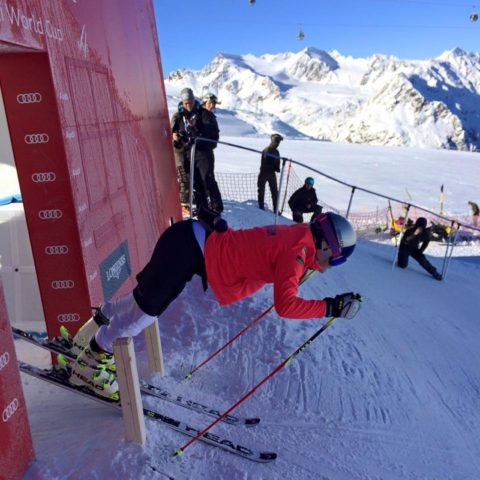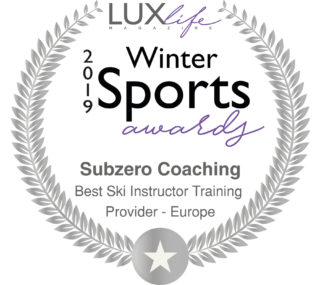European Common Training Test

European Common Training Test for Ski Instructors (CTT)
On March 2019, the European Commission (EC) declared a new policy to promote the mutual recognition of ski instructor qualifications across Europe. The Common Training Test, or CTT, is to be adopted by all major EU associations for ski instructors.
Below is a brief summary of the main points from the EC’s regulation, published in Spring 2019, and collected during our experience at the European Commission as Technical Advisors.

Aims of the CTT
The CTT, aims to facilitate the mobility of high level, professional ski instructors across the EU. Although ski instructors already benefit from mutual recognition of qualifications under Directive 2005/36/EC, this is not always the reality.
Many member states apply national rules, making a series of loop-holes to jump through for non-national instructors.
Through “increasing legal clarity, predictability and transparency” the CTT aims to improve opportunities of instructors in the member states.
Pilot Project
In 2012, a pilot project was introduced by the EC called the Memorandum of Understanding (MoU). This was offered to those of which had already passed their Euro-test and Euro-security and was signed by 9 member states. However, this Memorandum has since been acknowledged to have limited scope and status. Moving forward, the CTT will effectively replace the Memorandum, using it as a building block.
Outline of the European Common Training Test for Ski Instructors
The CTT builds on the Memorandum and uses the Euro-Test and Euro-security as a “reliable basis” for the content of the test. The CTT will be split into 2 main sections, the Technical Test and the Safety Test and are to be taken in this order.
Part 1: Technical Test

The Technical test solely consists of an alpine giant slalom. Member states or the competent association within the said state will run the test in accordance with FIS regulations. Individuals are allowed to repeat the Technical Test without limitation if previous attempts are not successful.
The test consist of 2 runs down a set giant slalom course. However, the 2nd run is not taken if the individual passes on the first. The general course criteria have been laid down by the EC with regard to vertical drop, the number of gates and length of course.
Each is as follows:
- The vertical drop between 250 – 300m.
- The number of gates between 11-15% of the vertical drop in meters.
- Outside gates required for first, last and delay gates.
- Slope profile – 1 third average slope (26-43%), 1 third steep (45-52%) and 1 third gentle (25-26%)
A minimum for three forerunners will set the base time. Candidates will be required to complete the test within the maximum time allowed for each gender:
- Males – a time equal to or less than the Technical test base time plus 19%.
- Females – a time equal to or less than the Technical test base time plus 25%.
Part 2: Safety Test
Participants are allowed entry to the Safety test after successful completion of the Technical Test and can repeat the test without restriction if unsuccessful. The Safety Test is composed of 2 main sections, a theoretical exam and a practical exam.
During the Theoretical exam, participants must perform an emergency phone call in the language of the host country providing accurate and clear details of an incident.
The Practical exam focus on off-piste skiing and consists of three leadership modules and one search and rescue module. It must be taken in one of the official languages of the member state in which the test is taking place.
The three leadership modules assess competency in areas including:
- Interpreting weather and avalanche forecast
- Proposing and executing an off-piste descent with a group whilst assessing risks
- Random assessment from the following topics:
Interpretation and understanding of meteorology
Understanding of dangers in high mountainous regions
Assessment and understanding of snow cover
The search and rescue module involves the rescue of AVDs (Avalanche Victim Detectors) mimicking buried casualties in an avalanche. - 2 AVDs must be detected
- At least 1 AVD must be successfully recovered
- Search zone limited to a maximum area of 50 metres x 50 metres
- Maximum time allowed to retrieve the AVD is 8 minutes

What does this mean for ski instructors in Europe?
The CTT put in place by the European Commission aims to “improve the opportunities of instructors throughout the member states. It should work to uphold the high standard of professionals across Europe and ensure important skills regarding safety and environmental knowledge are maintained. The mutual opportunity for nations to run and organize the CTT will improve equality surrounding the test. This should make the test fairer and more available to instructors across all areas of the EU.
This improved and consistent method of recognizing the qualification will increase the mobility of high-level instructors to work throughout Europe, making the most of the “single market.”
Reactions to the European Common Training Test for Ski Instructors
This is what the European Commission has ruled and what the official intentions for these changes are. All of us within the industry will need to adapt and probably re-calibrate some parameters. What are your thoughts?
The Subzero Coaching Team

Subzero Coaching is a company dedicated to ski instructor education and coaches development.
Understanding how the industry works and trying to foresee the changes we challenge ourselves to stay ahead of the curve. 
All our long term courses, it being those to become a ski instructor, our ISIA Level 3 or our Level 4 courses include second language classes, mountain security training and, of course, dedicated race training camps.
Always there, at every level. Elevating Performance.
European Common Training Test for Ski Instructors – Subzero Coaching